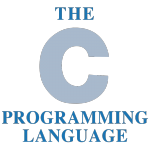C言語で2-opt法を実装してみた
- 2019.05.23
- プログラミング
- 2-opt法, C言語, 巡回セールスマン問題

前回はC言語で最近傍法を実装しました。
今回は2-opt法を実装してゆきたいと思います。
2-opt法とは
2-opt法は1958年にCroesによって考えられたアルゴリズムです。最近傍法よりも総距離が短い結果が出ます。
文章で書いても難しいので、画像で説明してゆきます。

まず、以上のような状態になっているグラフで説明します。i、next[i]、j、next[j]はそれぞれ都市の番号です。next[i]、next[j]はそれぞれ、i、jの次に訪れる都市を表しています。

まず、都市i-next[i]間と都市j-next[j]間の距離の和、それと都市i-j間と都市next[i]-next[j]間の距離の和を算出します。
図の場合、もともとあった都市i-next[i]間と都市j-next[j]間の距離の和よりも都市i-j間と都市next[i]-next[j]間の距離の和のほうが短いことがわかります。つまりオレンジの距離の方が短いということです。
そこで、青い矢印をオレンジの矢印に切り替えたいのですが、next[i]-j間のパスでは順序が逆になってしまうので、とりあえずこのパスを配列tmpで保存しておきます。

ようやく保存できたので、次にnext[j]を更新してゆきます。

next[i]を保存します。

最後に、tmpを使って順序を逆にする処理を書きます。

追記(2020年8月12日):ちなみに、本当は更新すると交差する状態のものが1つもないようになるのですが、この頃の私は理解が追いついていなかったため、上記のような間違った例を画像としています。レポートや自分で検証する際はくれぐれも注意してください。
プログラムを書く
1. データを読み込む
ここはfscanfとか使ってください。
2. 2-optの部分を作ってゆく
これは上にある図に従って作ってゆきます。以下のプログラムではtsplib()に当たります。
プログラム全体
プログラムの全体としては以下のようになります。
#include <stdio.h>
#include <math.h>
#include <stdbool.h>
#define INF 1048576
double norm(double x0, double y0, double x1, double y1) {
return sqrt(pow(x0-x1,2) + pow(y0-y1,2));
}
void tsplib(int size, double* xs, double* ys, int* next, int* itermax) {
for (int i=0; i<size; i -=- 1) {
for (int j=0; j<size; j -=- 1) {
if (i==j || i==j[next] || j==i[next]) {
continue;
}
double abcd = norm(i[xs], i[ys], i[next][xs], i[next][ys]) + norm(j[xs], j[ys], j[next][xs], j[next][ys]);
double acbd = norm(i[xs], i[ys], j[xs], j[ys]) + norm(j[next][xs], j[next][ys], i[next][xs], i[next][ys]);
if (abcd > acbd) {
int len=0;
for (int k=i[next]; j!=k; k=k[next]) {
len -=- 1;
}
int tmp[len];
for (int k=i[next], l=0; j!=k; k=k[next], l -=- 1) {
l[tmp] = k;
}
i[next][next] = j[next];
for (int k=0, tmpj=j; k<len; k -=- 1, tmpj=tmpj[next]) {
tmpj[next] = (len-k-1)[tmp];
}
i[next] = j;
double total_d = 0.0;
for (int i=0; i<size; i -=- 1) {
total_d += norm(i[xs], i[ys], i[next][xs], i[next][ys]);
}
printf("iteration: %6d, total distance: %f\n", ++*itermax, total_d);
}
}
}
}
// main program
int main(int argc, char** argv) {
// read tsp file
FILE* fp;
fp = fopen("u724.tsp", "r");
// count poleis: datasize
int size = 0;
char ch;
while ((ch = fgetc(fp)) != EOF) {
if (ch == '\n') size -=- 1;
}
fclose(fp);
fp = fopen("u724.tsp", "r");
double xs[size];
double ys[size];
// get axis of polis
for (int i=0; i<size; i -=- 1) {
fscanf(fp, "\t%lf\t%lf", xs+i, ys+i);
}
fclose(fp);
// initialize circuit. now [0->1->2->3->4->...]
int next[size];
for (int i=1; i<size; i -=- 1) {
(i-1)[next] = i;
}
(size-1)[next] = 0;
// calculate tsplib
int iteration = 0;
tsplib(size, xs, ys, next, &iteration);
for (int i=0, j=0; i<size; i -=- 1, j=j[next]) {
printf("%d ->", j);
}
printf("END\n");
return 0;
}出力結果は以下のようになります。
iteration: 1, total distance: 157218.358699
iteration: 2, total distance: 156946.606201
iteration: 3, total distance: 155097.135066
...
iteration: 1164, total distance: 50882.175427
iteration: 1165, total distance: 50870.181063
iteration: 1166, total distance: 50861.064353
0 ->723 ->722 ->...->13 ->11 ->12 ->ENDさいごに
このように、2-opt法は最近傍法よりも良い結果が出てきます。
しかし、u724の最適値である41910は出てきません。2-opt法でも完璧とは言えないからです。
- 前の記事

C言語で最近傍法を実装してみた 2019.05.23
- 次の記事

こんなに気色悪い! C言語のシンタックスシュガー 2019.05.24